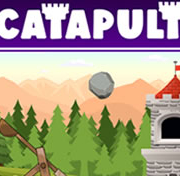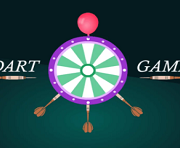Carnivores and Herbivores Science Game for Kids
Both herbivores or carnivores can be used to classify animals based on the food they eat. This science game helps children practice grouping animals that eat meat and plants, as well as those that eat all foods - called Omnivores. A child should be able ask and answer the question: Are humans herbivores, carnivores, or both?
Journey into the Animal Kingdom: Carnivores, Herbivores, and Omnivores
The intricate world of life science unfolds various wonders for young learners. One such marvel lies in understanding the different dietary habits of animals. Through exploring carnivores, herbivores, and the ever-versatile omnivores, kids can gain profound insights into the animal kingdom. And what better way to learn than with an interactive science game for kids?
Carnivores: The Meat Eaters
Carnivores are animals that predominantly eat meat. From the fierce lion roaming the African savannah to the agile falcon soaring in the skies, carnivores have evolved in various ways to hunt and feed on other animals. They possess sharp teeth and claws, aiding them in catching and consuming their prey. Their keen senses, like excellent vision or a heightened sense of smell, often make them adept hunters.
Herbivores: Nature’s Plant Lovers
Contrastingly, herbivores feed exclusively on plants. Elephants munching on grass, giraffes reaching for treetop leaves, and cows grazing in fields are all examples of herbivores. Their bodies are designed to extract nutrients from plants, often having flat teeth to grind tough plant matter. Some, like the cow, have specialized stomachs to break down and digest plant fibers effectively.
Omnivores: The Best of Both Worlds
Amidst carnivores and herbivores, we have the adaptable omnivores. These animals have a varied diet, consuming both plants and meat. Humans, bears, and raccoons are classic examples of omnivores. The dietary flexibility of omnivores often allows them to thrive in various environments, from dense forests to urban landscapes. Their anatomy reflects this adaptability, possessing both sharp teeth for tearing meat and flatter ones for grinding plants.
Dive into an Interactive Exploration
Knowledge truly comes alive when it's interactive. To immerse kids in the captivating world of animal diets, there's a fantastic carnivores and herbivores science game for kids. This game allows young learners to categorize different animals based on their dietary habits, enriching their understanding in a fun and engaging manner.
Why Understanding Diets Matters
The significance of categorizing animals based on their diets isn't merely academic. It offers insights into the balance of nature. For instance, carnivores control the population of other animals, ensuring no single species becomes too dominant. Herbivores, in consuming plants, aid in seed dispersal, promoting plant growth in new areas. Omnivores, with their varied diet, often play roles in multiple food chains, ensuring ecological balance.
In conclusion, the world of carnivores, herbivores, and omnivores is a testament to the complexity and beauty of nature. Each category, with its unique dietary habits, plays a crucial role in maintaining the balance of our ecosystems. Encouraging kids to delve into this subject through interactive means like games can spark a lifelong fascination with life science and the wonders it holds.
Read more
It is important to understand the differences between animals based on their diet. This helps scientists better understand the animal kingdom. Different foods have been adapted to animals' diets. This is often due to natural selection and the needs of different environments. Children learn about the different species of animals by learning about their diets. These are some ways to engage children in this learning activity.
Children should be taught the difference between herbivores (or carnivores) and their functions. Carnivores are dependent on other organisms or meat, while herbivores rely only on plants. Special teeth are used to rip and grind plant material. They need to eat a lot of plants to get the energy that they require. Carnivores like lions or tigers have developed teeth that allow them to eat large animals and flesh.
Learn the differences between herbivores & carnivores. The majority of herbivorous animals like cows, sheep, and goats eat plants. It is important that you specify which parts of a plant are being eaten. To process leaves and other plant material, herbivores like goats require strong teeth and a large stomach.
Omnivores are animals that eat both meat and plants. Its diet can be varied and will differ from one species to the next. Humans are omnivores, meaning they can eat both animal and plant foods. However, some people prefer to eat only vegetables. However, they are not vegetarians or vegans.
Carnivores like lions or tigers, are fierce predators that can be found in the wild. Because they must chase prey in order to capture and eat them, they are extremely fierce. They also eat wild boars and buffalos.









